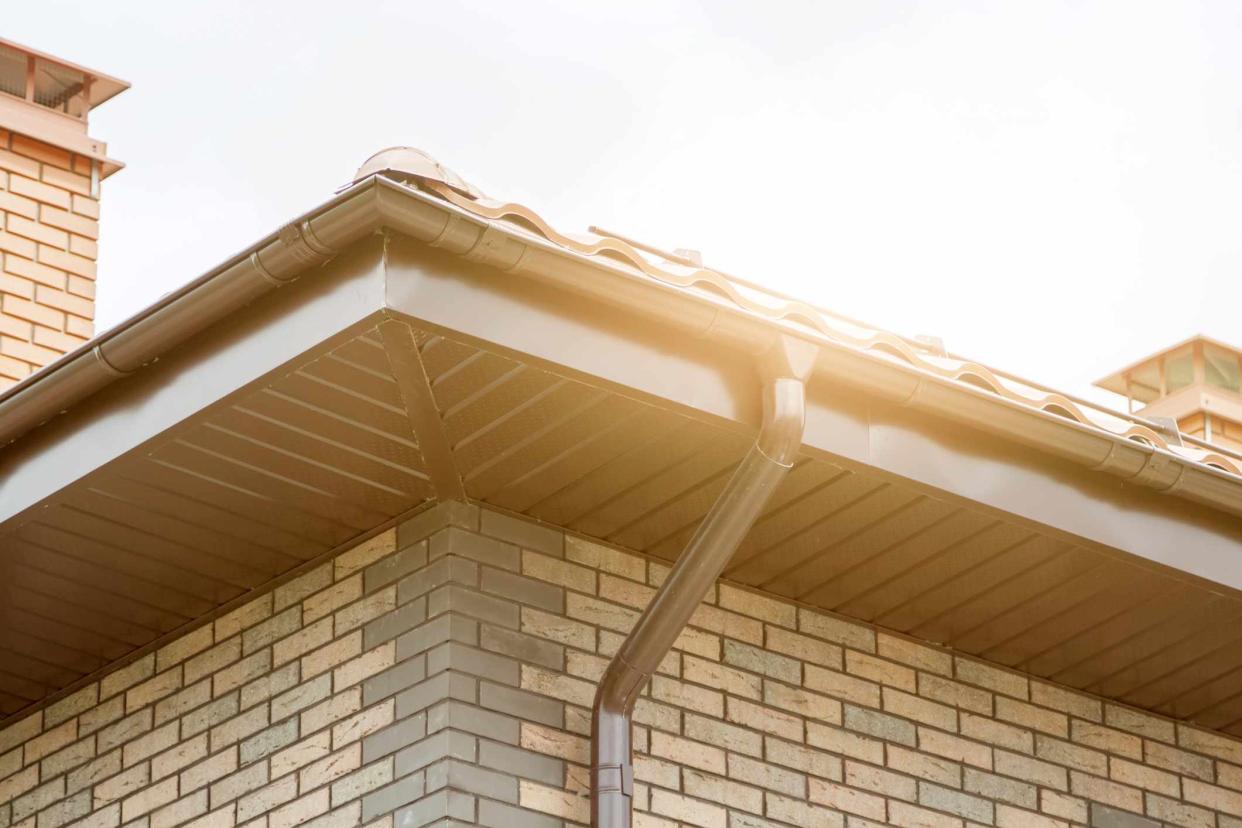What Is Fascia on a House? What You Need to Know

sommersby / Getty Images
Fascia is a term that is often thrown around by roofing experts to identify the part of the roof structure that covers the exposed roof rafters, trusses, and open cavity where the roof meets the exterior walls. This roof component typically sits under the roof edge or roof lining and is often used to support the weight of the gutter and downspout system.
Trim, fascia boards, and soffits all work together to help protect the home from rain, sleet, snow, and moisture. Trim covers the gaps around the windows and doors, soffits form the underside of the roof overhang to prevent moisture from entering the interior cavity of the roof, while fascia boards protect the front of the roof rafters and trusses.
What Is Fascia on a House?
Roofers, gutter installers, and other professional contractors may mention fascia when discussing a roofing repair project, roof upgrades, or gutter installations. Fascia is a structural component of the roof that is designed to both protect the interior roof cavity from moisture and support the weight of the gutter and downspout system.
These boards work with the soffit to prevent moisture from seeping into the roof cavity. While the soffit protect the underside of the roof, forming a protective ceiling, the fascia board runs horizontally across the face of the roof rafters and trusses, covering the interior roof cavity. Fascia boards can be made with a variety of materials, including wood, PVC, composite, vinyl, and aluminum-wrapped boards. Wood is the most common option, though it is also the most susceptible to mold growth and rot.
Trim vs. Fascia
Because trim and fascia are so similar, it can be easy to mix up these two terms. Both trim and fascia help to protect the home from rain, sleet, snow, and moisture, both components are part of the exterior structure of the home, and both are necessary for the ongoing health of the home.
Trim is the term typically used to refer to the exterior and interior housing components that are used to seal the gaps around the windows and doors. On the interior of the home, trim is often installed around the top and bottom of the walls to cover the gap between the wall and the floor. Outside the home, trim is generally found around the windows and around the doors.
Fascia is a horizontal or angled board that is designed to enclose the interior roof cavity. The fascia board is located on the face of the roof, covering the roof rafters and trusses. Additionally, the gutters and downspout system are generally attached to the fascia board for support, so if the fascia boards are rotted or in poor condition, then it can lead to the gutter system pulling away from the home or collapsing entirely.
What Is the Purpose of Fascia?
The main purpose of fascia boards on a house is to protect the interior of the roof from mold growth, moisture accumulation, rot, insects, rodents, and other pests. However, the fascia also has other purposes, including anchoring the gutter system to the home, supporting the weight of the horizontal gutter run, as well as the downspout, and covering the rafters and trusses to give the home a more appealing appearance.
If you are having work done on the roof or gutter system, make sure to speak to the contractor to have them inspect the fascia boards. Replace rotted, split, or warped fascia boards as soon as possible to avoid future problems with the roof structure and gutter system.
How Does Fascia on a House Affect the Gutters?
Fascia is installed on the face of the roof structure just under the roof edge or the roof lining. The fascia boards cover the roof rafters and trusses, working with the soffit on the underside of the roof to help prevent moisture from entering the interior roof cavity. This board also serves as the support for the gutter and downspout system.
The gutters are positioned at the edge of the roof and attached to the fascia boards. Ideally, water runs down the roof and into the gutter system where it is redirected through the downspout to the ground. However, if the gutters have pulled away from the wall or are not installed correctly, water can seep into the gap between the roof and the gutter, causing damage to the fascia.
A warped, rotted, split, cracked, or otherwise damaged fascia board won't be able to support the weight of the gutter system, which could lead to the gutters pulling away from the roof or collapsing entirely. For the ongoing protection of the home, it's necessary that the fascia boards are in good condition and that the gutter system is installed correctly.
Read Next: Common Gutter Problems and DIY Fixes at Home

